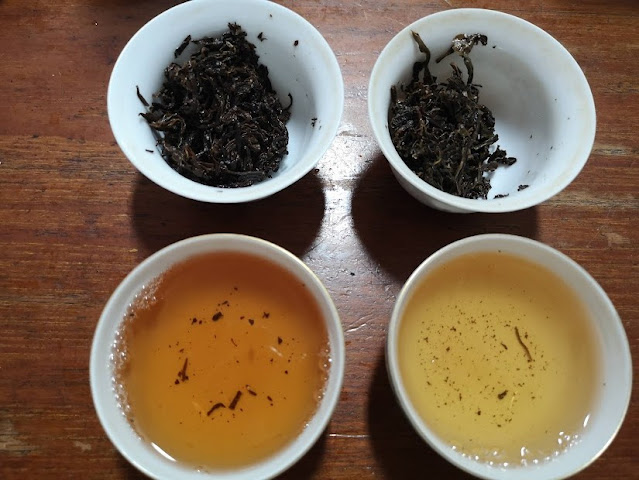I'm reviewing two older sheng pu'er versions, again from the Legend of Tea vendor in Malaysia (sent by them for review; many thanks!). This should be interesting for balancing out a set of different aged versions from them and from Tea Mania, a Swiss vendor I've also been reviewing teas from.
I'll cover their listing description, then the review, which I essentially always write before reading any description.
2011 Xiao Ba Wang Raw Puerh Tea (Bu Lang origin, $77.70 for 200 grams, equivalent to $139 for a 357 gram cake)
The raw material selected by XiaoBaWang in 2009 is from BuLang Mountain, which is one of the six ancient tea mountains in China, and it is also one of the most famous Puer tea production areas. BuLang Mountain is located in South Asia, with a tropical monsoon climate, full of sunshine, abundant rainfall. These natural conditions contribute BuLang Mountain Tea as a legend in Puer tea.
Tea liquor tastes high sweetness, after 9 years of storage in the pure dry warehouse, it becomes thick and smooth, not astringent, not dry, and docile.
A little to unpack there: that may well be tea that's two years older than the pressing date (which isn't so unusual), with the 9 years time-frame just relating to when the page listing was updated (in 2020, it would seem). The "dry warehouse" part relates to natural storage, per discussion with the vendor; conditions weren't maintained at a consistently high humidity level.
2012 Xiao Ba Wang Raw Puerh Tea ($72.96 for 200 grams, equivalent to $130 for standard 357 cake)
XiaoBaWang 2012 chose to use spring tea leaves from MengSong Mountain, MengHai County. MengSong is one of the oldest ancient tea plant in MengHai, the history of MengSong Mountain minority tea planting is as long as that of NanNuo Mountain minority tea planting.
The tea leaves are tightly knotted, bitterness melts in the mouth, leaving a lingering aroma. The palate is rich and thick, with a sweet aroma of honey fruit.
That seems clear enough.
Review:
2011 Bulang: it's pretty subtle at this point, warm tones and not much more. It will open up a bit and strengthen, it's just a matter of how much. I actually used a rinse this time too. I'll push it the next round and add more description.
2012 Meng Song: also subtle, also warm in tone, but a bit different. Both of these express a slight mustiness, like old book or stored boxes smell, which I don't see as necessarily too negative. That kind of thing can transition away within a round or two, as harsher astringency sometimes does in younger sheng.
2011 Bulang #2: perhaps brewed a bit too long, from the color, but that will move things along. This is definitely well-aged sheng, towards the end of that process. Breaking that down to a flavor list is never so easy. People end up mentioning descriptions like camphor, medicinal herb, ju-jube (Chinese date), and old books, which are all reasonable and valid enough, but those can lend themselves to seeming a bit vague. Medicinal herb could be a lot of things, and "old books" is sort of an underlying context or impression.
This tastes a little like old books, or old furniture. I suppose there's a sort of old tropical hardwood flavor going along with that. Feel is interesting, with some fullness, and then also dryness. I can't really place fruit or spice, and that list doesn't seem long enough yet, to describe what I'm experiencing.
2012 Meng Song: there's a good bit more root spice to this, or something along that line. It could be a bark spice. Old books might also work. It comes across as more intense; the other is still a bit subtle at this point. Again feel has some structure and also some dryness. Ju-jube might actually fit for this one; kind of funny it works out like that.
2011 Bulang #3: it's funny how much intensity and complexity comes across in this, with it still hard to describe as tasting like much. It has a lot of depth. Warm mineral tones stand out, and that aged books sort of theme, more pronounced than it usually is, more of a main flavor component, versus a supporting aspect. I've tried varying versions of aged teas that seem to just fade, and a warm depth remains, but not much else, and this isn't like that. It doesn't work to say this is subtle, but in one sense that's true. A faint woodiness is also present, like the deep washed-out scent of driftwood. It's probably better than it sounds, related to how much I like it.
2012 Meng Song: this is more intense, more conventional. Old books flavor is also present in this, or maybe it's old furniture. Again the rest is a bit like a spice-tone, maybe a root, possibly bark. Interpretation as dried fruit could work, again with Chinese date working as well as any other.
Both are fairly clean at this point; that initial mustiness did drop out. Mouthfeel is unusual for both, or maybe not that unusual related to how well-aged sheng go. It's full in a different sense, even a little dry, with strong mineral tones seeming to match with that experience, with both carrying over. It's interesting that mouthfeel can carry over, as is common with aftertaste. These are definitely truly aged sheng versions, pretty far along for this being only 13 years old.
I used the broken parts of the sample for this Meng Song version; that probably affected the feel, bringing out even more dryness, which may soften over a couple of more rounds.
2011 Bulang #4: it improves, but it's still subtle. A warm sweetness picks up. For people on this page this experience could be lovely, but for many others they just wouldn't get it. I'm in the middle.
It's complex enough that someone with the right background or imagination could list out a very long flavor and feel aspect list, and then for most it wouldn't come across as expressing much that's distinct at all. Aged sheng can be like this.
On the positive side this may well be a humid-stored sheng version that's now 16 years old, not 14, and for some trying a relatively fully aged version might be really novel. It might mellow and deepen a little but it's pretty much there.
2012 Meng Song: perhaps easier to relate to for stronger flavors emerging, and more distinct individual flavor range, rather than mostly depth and mineral, with aged books or furniture range. It might taste a little greener at this stage (in the infusion count, related to transitions over this brewing cycle). It's warm, and well-aged, with almost all the vegetal range switched over to warmer flavors (aged wood, spice, etc.), but the process isn't absolutely complete, it can still probably change more. 13 years is a long time in warm and humid storage conditions, but it's still not the same as 20 to 25.
Both of these express so much warm mineral depth. It's one thing to say that, but hard to convey what that is like.
2011 Bulang #5: it shifts a bit into spice range, maybe a subtle root spice, along the line of ginseng, or maybe some medicinal herb type I'm not familiar with. It's funny how it lacks more up-front or forward flavors but the depth adds up to an experience of complexity, and even intensity. It's also clean, and heavy on mineral base tones. It's interesting.
2012 Meng Song: this shifts, but it's within the same dried fruit / bark spice range. It's really coming into its own at this stage, the best it has been. Dryness fades, and fullness and richness pick up. Trying them one after the other I do like this better, especially at this point, but the other has been improving as well, smoothing out and picking up more depth and complexity.
2011 Bulang #6: a reference to something like a macadamia nut might help place what I've been trying to express, a nut type that is rich and complex, heavy with creamy flavor, but that doesn't taste like much, at least that's easy to pin down. It tastes like a macadamia nut; that's it. Some of that richness and fullness is present in this. It might be closer to a Brazil nut, I think. There's a warm mineral edge that's common across different kinds of tea, that's also hard to place. Like driftwood? Or subtle spice? The aged books reference doesn't work as well since the flavor is so clean at this stage, but it might still cover a part of it.
2012 Meng Song: that mix of flavors I've been describing doesn't seem like an ideal description, but it's probably as close as I'm going to get. It shifts just a little each round, but the same set just comes across differently, shifting the balance of each input. Warm mineral undertone is still a main part of the experience of both, and feel is unique for both.
Skipping reviewing late rounds isn't because there wouldn't be more to tell. This covers most of the story, and it's too much for me to get through.
Conclusions:
It probably didn't help that I do those tastings on weekend mornings, and rush to get to errands. Today it's a doctor's visit; yesterday it was something else. For teas like these it's better to take your time, to drink them over an hour or more, letting the experience settle in.
They seemed good. That would relate to preference, as for any tea type or version, and aged sheng is an unusual range. It can be complex but subtle. Maybe only the older Bulang version really seemed subtle, and even for that version that description isn't the best fit.
This reminds me of trying an aged sheng version (from Thailand) with a local contact, who was well-known in tea discussion circles back then, on Tea Chat. He commented that it seemed about right, in the right range, and was pleasant, but it didn't work as well to describe what that range was, or why it was positive. That might've been 8 or 9 years ago, and that tea was probably around this age then, or maybe slightly newer. I'm not really capturing why these work out well here either. Maybe if I'd added camphor as a description that would clarify everything.
Aged Xiaguan and other factory teas are completely different. They wouldn't typically be this approachable at "only" 13 and 14 years old (or 16; the other may have been pressed from material that wasn't new), even stored in a humid and warm place. Intensity would be dialed way up, probably with some aspects seeming like rough edges.
So just how good are these, and do they seem to represent a good version of "boutique" style-range teas? I suppose that second distinction might be a bit broad to evaluate. Styles and forms would vary too much. To me they seem quite pleasant, like good examples of these kinds of styles, and it reduces down more to whether or not someone likes this type range of tea, transitioned through this form of storage input. Maybe I do like the trade-off of rough edges and heavier barnyard flavors for older Xiaguan better, but that wouldn't work as well this young, no matter the storage conditions. For this age these styles seem pretty suitable; they work well fermentation transitioned this much.
To make all that more specific I suppose it depends on whether someone likes the complex, layered, but somewhat subtle character of the Bulang, or the spice-range intensive distinctive flavor of the Mengsong version. Again to me they're fine, they're good. I suppose I liked where that younger Bulang was better (from 2021), how somewhat transitioned but still young floral range stood out.
Of course I can't extend all of this to any guesses about what these were like when brand new, or 4 years into aging. It would be nice if I could, or if anyone else could. With enough exposure some transition patterns would have to stand out, but it may not work well to guess what flavors had dropped out.
It's even difficult to specify how these relate to my own preference. They're good, and I would like drinking each if I owned them, but nothing really stands out as something I couldn't do without. It's nice how the Bulang expresses so much complexity and depth, even if forward flavor notes are limited. The extra flavor intensity of the Mengsong version is nice, but that kind of root spice range isn't really a personal favorite.
Related to value it's an unusual opportunity to buy cakes of this quality and aged character for this general pricing range ($130-some, or both were really $70-some for 200 gram versions). That's fairly standard range pricing for young sheng, at this point. These are obviously a boutique style tea material and style. That's not a great thing, if a tea ends up fading away, or aging results aren't positive, but these are good quality. Maybe earlier on a quality marker could've identified the Tea Mania versions I just reviewed as slightly better, a little more complexity or depth, but at this stage, since they lack much for flaws, it's more about match to preference, instead of quality level being a limitation.
I was hoping that more of a connection with the Tea Mania 2017 and 2018 versions would turn up (from Bulang and Hekai), but those are at the opposite side of the aging range, and I can't guess about what will lead to what to that extent.
 |
visiting One Bangkok, a new mall |
 |
it's a good place to catch a movie. if you've been considering seeing Fantastic Four you should go; it was great. |




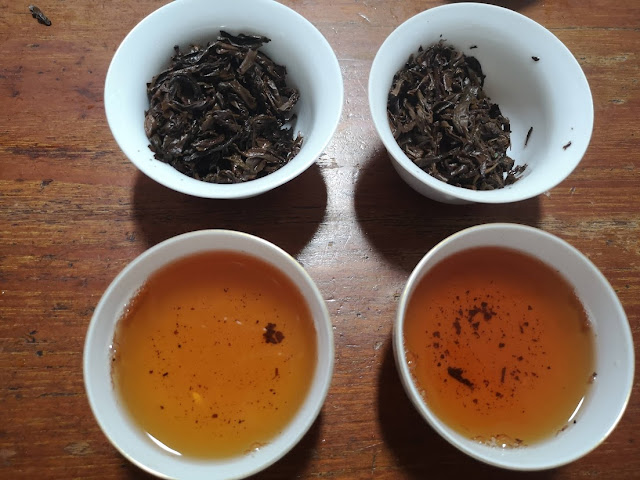




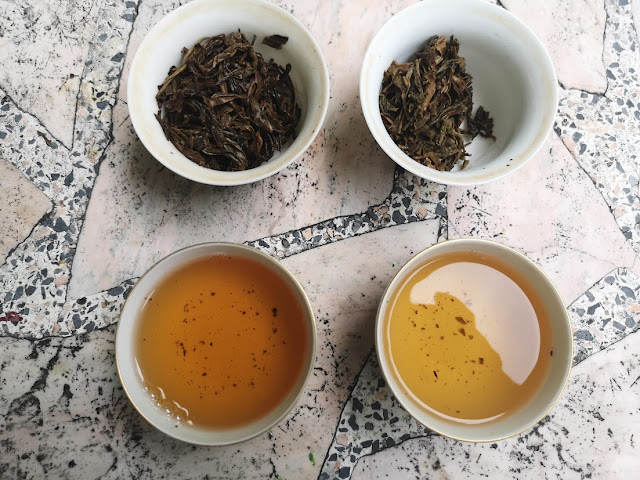






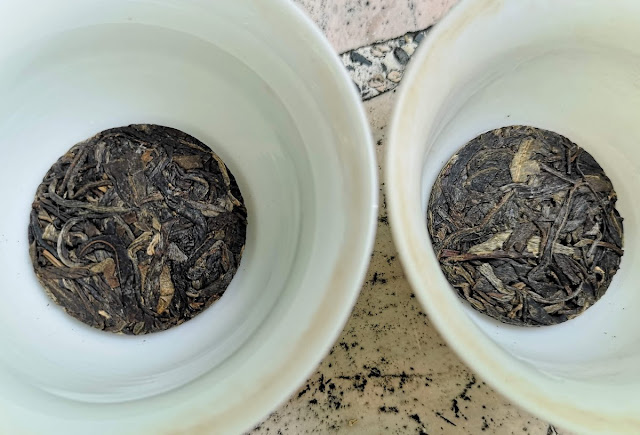
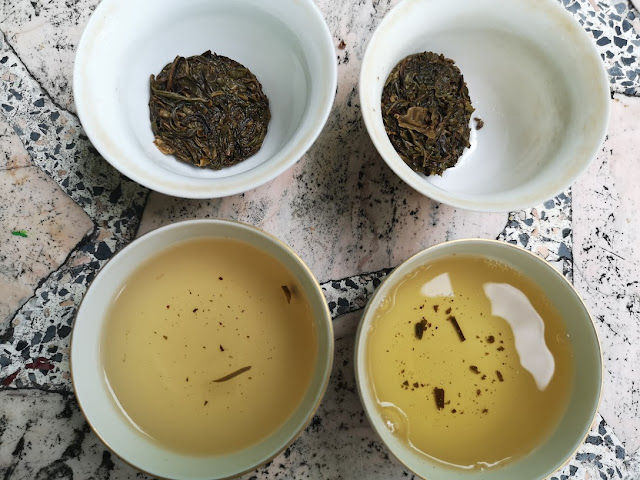





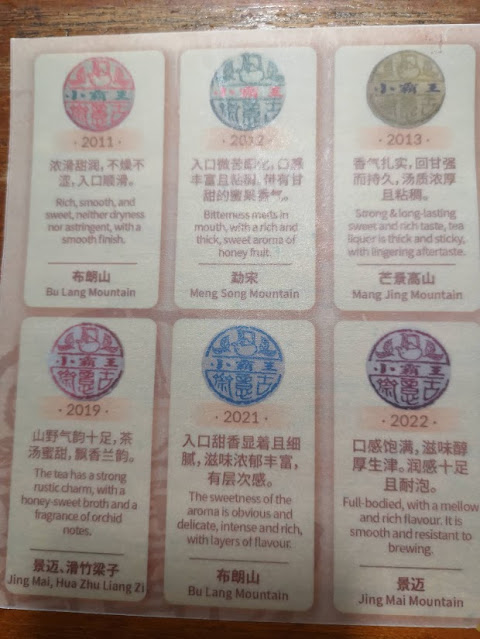





.jpg)

